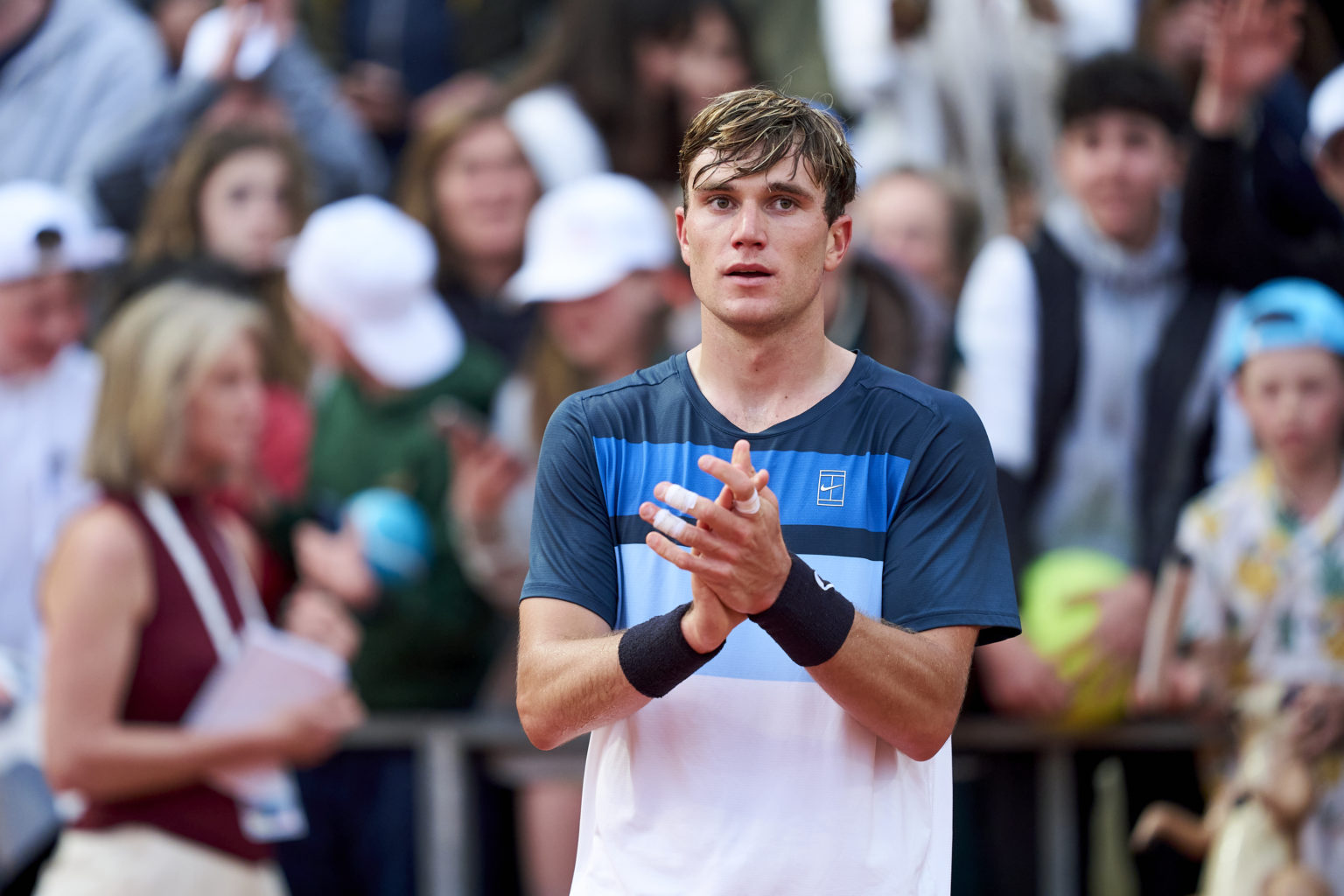
On a sun-drenched afternoon in Monte Carlo, April 8, 2025, Jack Draper, the 23-year-old British tennis sensation, stepped onto the clay courts of the Rolex Monte Carlo Masters and delivered a performance that turned heads. Facing off against American Marcos Giron in the second round, Draper unleashed a blistering 6-1, 6-1 victory, wrapping up the match in just over an hour. It was a statement win for the world No. 6, who, after a career-defining triumph at Indian Wells last month, is now signaling his intent to conquer a surface that has long been his Achilles’ heel. Post-match, Draper didn’t shy away from sharing his unfiltered thoughts on clay, offering a glimpse into his evolving relationship with the red dirt and his ambitions for the season ahead.
The match itself was a masterclass in dominance. Fresh off a first-round bye as the tournament’s fifth seed, Draper wasted no time asserting control. His forehand, a weapon that has propelled him into the top 10, whipped winners down the line with surgical precision, while his serve—a reliable ally in his recent hard-court success—held firm under the tricky Monte Carlo conditions. Giron, ranked No. 47, had little answer, managing just five points off Draper’s first serve and wilting under the Brit’s relentless pressure. “I’ve been working really hard to look for my forehand and do all the right things to be effective on this surface,” Draper said afterward, his voice carrying a mix of satisfaction and determination. For a player who has openly struggled on clay in years past, this was a performance that felt like a turning point.
Draper’s history with clay is a tale of frustration and near-misses. Last year, he won just four of ten matches on the surface, a record punctuated by a disheartening first-round exit at the French Open. “I’ve struggled a little bit in the last couple of years,” he admitted, reflecting on a journey marked by tight losses to top players and a lack of rhythm on the slower courts. Injuries haven’t helped either—two years ago, a setback sidelined him during the clay swing, robbing him of crucial experience. Yet, beneath the setbacks simmered a resolve to crack the code. “I feel like I haven’t had too much exposure to clay,” he’s noted in the past, a sentiment that underscores his hunger to rewrite the narrative. This year, armed with newfound confidence and a refined game, he’s ready to make his mark.
Monte Carlo’s courts, nestled against the Mediterranean backdrop, are notorious for their unpredictability—sometimes lively, sometimes sluggish depending on the time of day. “Not easy conditions here,” Draper observed, acknowledging the challenge of adapting to a surface that shifts beneath your feet. Playing later in the day, as he did against Giron, the ball tends to slow, demanding patience and precision—qualities he’s been drilling relentlessly in training. “I feel like I’ve been transitioning well to the clay,” he said, a nod to the hard work that’s starting to pay dividends. His movement, once a question mark on the slippery red dust, looked assured as he slid into shots with the ease of a seasoned dirt-baller, a stark contrast to the tentative steps of seasons past.
This victory—his second career win in Monte Carlo and his tenth on clay overall—comes at a pivotal moment. After storming to the Indian Wells title, beating the likes of Carlos Alcaraz and Holger Rune, Draper stumbled early in Miami, a loss that only fueled his fire. “I’m really hoping this year with my new tennis that I can have a good run,” he declared, his eyes set on a deep push through the clay season. Next up, he faces Spain’s Alejandro Davidovich Fokina in the third round, a matchup that promises to test his mettle against a crafty clay-court native. Win that, and a potential quarterfinal clash with Casper Ruud, one of the tour’s premier clay specialists, could loom—a tantalizing prospect for a player eager to prove he belongs among the elite.
Draper’s candidness about his clay-court evolution is refreshing. He’s not one to sugarcoat the past, but he’s equally unafraid to embrace the future. “I definitely have a lot to prove,” he’s said before, a mantra that echoes in every forehand he lashes and every drop shot he delicately places. At 23, with a Masters 1000 trophy already in his cabinet, he’s no longer the upstart scrambling for footing—he’s a contender with a target on his back. As he navigates the clay swing, from Monte Carlo to Madrid and beyond, the tennis world watches with bated breath. For Jack Draper, this isn’t just about winning matches—it’s about shedding old doubts and carving out a legacy, one sliding step at a time.
Leave a Reply